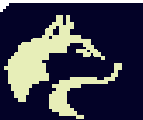Team:Washington/Gram Positive/Build
From 2010.igem.org
Building Mutant CapD_CP
To build the mutant proteins, we follow the path of the central dogma. First, we created DNA that contains our mutations. Second, we induced our transformed cells containing the desired DNA to express the mutant proteins. Lastly, we harvested the proteins by lysing open the cells and filtering out non-desired cell components.
Generating Mutant DNA
After we came up with the desired mutant protein designs, we employed the method Kunkle Mutagenesis to generate the desired mutant DNA (Kunkel Mutagenesis protocol). Kunkel mutagenesis is a three step process. First, we obtained ssDNA of wild-type CapD_CP gene from transformed cells that contain the CapD_CP gene and lack the enzyme to destroy uracil. The presence of uracil is used later to obtain the correct DNA strand. The second step involved annealing our mutation-containing primers to the ssDNA and polymerizing the strand that contains our desired mutations. The result is a double-stranded DNA, consisting of a wild-type CapD_CP strand and a mutations-containing (desired) strand. Lastly, to obtain a dsDNA that consists of only the desired strands, we transformed it into another type of cell that contains enzymes to destroy the uracil-containing strand. Once the uracil-containing wild-type strand is destroyed, the complementary strand is synthesized, resulting in a dsDNA that contains only our desired mutations.
Protein Expression and Purification
Once we obtained cells transformed with our desired mutant DNA, we induced the cells to express the mutant protein. By introducing Isopropyl β-D-1-thiogalactopyranoside (IPTG), an allolactose mimic, we induce E. Coli to produce our protein. IPTG binds with the lac inhibitor protein and activates the lac operon, turning on the CapD_CP gene and causing production of our mutant protein. For this step, we used two different protocols: small scale and large scale. The concepts described below are the same for both protocols. To harvest our mutant proteins, we needed to first lyse open the induced cells and then purified out our proteins (refer to small/large scale protocol). For the purification procedure, we employed Talon beads. CapD_CP's designed histidine tags bind to the beads, whilst everything else flows through. The result of this process is our purified mutated CapD_CP proteins.
 "
"


